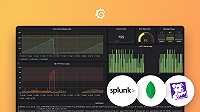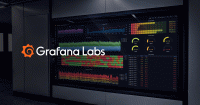Sift analysis - HTTP error series
This analysis reviews HTTP request and response data, looking for any errors that may be relevant within the given time range.
Inputs
Required:
clusternamespace
Optional:
- None
If no cluster or namespace is available, this analysis will use all clusters and/or all namespaces it can locate.
How it works
Step 1: Retrieve relevant series
A request is made to the Prometheus series endpoint to fetch all series that match the investigation selectors and include one of the known HTTP error-related labels: code, http_status, status_code, statuscode, response_code, or status.
The label values should match the regular expression "(4|5)[0-9]{2}".
Step 2: Filtering out some series
Series with names ending in _sum or _bucket are filtered out to narrow down the dataset
Step 3: Query series data
For each remaining series, an additional request is made to the query_range Prometheus endpoint to retrieve the data using the following query:
sum(
rate(http_metric{%s, code=~"(4|5)[0-9]{2}"}[5m]) or
rate(http_metric{%s, http_status=~"(4|5)[0-9]{2}"}[5m]) or
rate(http_metric{%s, status_code=~"(4|5)[0-9]{2}"}[5m]) or
rate(http_metric{%s, statuscode=~"(4|5)[0-9]{2}"}[5m]) or
rate(http_metric{%s, response_code=~"(4|5)[0-9]{2}"}[5m]) or
rate(http_metric{%s, status=~"(4|5)[0-9]{2}"}[5m])
)The query requires cluster and namespace labels. If these labels are not available, it will utilize all available inputs.
Step 4: Detect timestamps with elevated HTTP errors
For each series, the system checks if any point in the series exceeds the threshold specified in the configuration compared to the average so far value of the points.
The timestamp of any such point is noted as the occurrence of an anomaly, indicating elevated HTTP errors
Step 5: Identify anomaly windows
Once all series have been analyzed, the anomaly timestamps are processed to determine the 5-minute window with the highest count of elevated HTTP error timestamps.
What resources does this analysis use?
- Prometheus datasource - Series endpoint
- Prometheus datasource - Query range endpoint
How does this analysis determine when a result is interesting?
- The anomaly window start time is after the investigation start time
- The anomaly window has more than one series
What configurations options are available for this analysis?
Cut off time
The maximum time to look back for anomalies. Increase this value to look further in the past for erroring series, or decrease it to reduce false positives.
- Default: 90 minutes
- Minimum: 20 minutes
- Maximum: 2 hours
Threshold
The minimum percentage change of HTTP errors from the rolling average before a series is considered anomalous.
- Default: 60%
- Minimum: 50%



